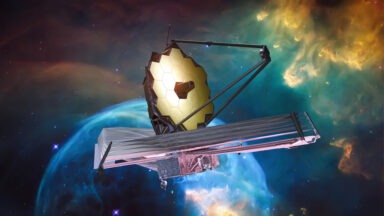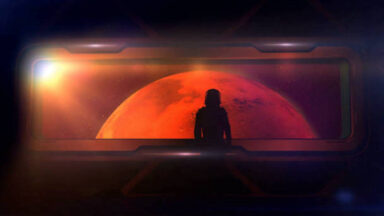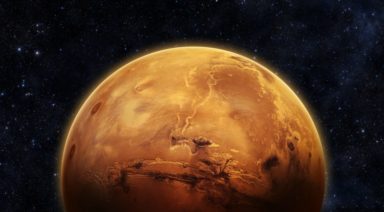Government Admits Oumuamua Wasn’t First Interstellar Object

The U.S. military confirmed the first interstellar object to hit Earth was years before Oumuamua and corroborates research done by a famous astronomer.
We’ve reported before about Oumuamua, the first interstellar object to enter our solar system in 2017, and Harvard professor Avi Loeb’s book arguing Oumuamua might be extraterrestrial. Whatever it was, its existence was remarkable as the first interstellar object to enter our solar system.
But now, we are learning that Oumuamua was the second interstellar object to enter our solar system, and this discovery was made by none other than Avi Loeb.
In 2019, Loeb, working with his student Amir Siraj, combed through the database of meteors looking for other interstellar objects. When they found evidence of a fast-moving meteor that hit the Earth, they wrote a paper arguing it was interstellar too and preceded Oumuamua by almost four years.
“The referees of the paper that we wrote rejected the paper, and argued that it should not be published,” Loeb said. “Because they don’t trust the government and perhaps the uncertainties that are often quantified in the scientific literature as ‘error bars,’ which they are just the level of uncertainty in the measurements (that) are unknown.”
So the paper could not go through peer review or be published because although they used a public government database, the level of uncertainty, or error bars, were kept classified. The U.S. military does not reveal that information as it could give away the sensitivity of their equipment. The paper was stuck in academic limbo until now…
The U.S. Space Command just released a memo sent to NASA’s science chief confirming Loeb and Siraj’s work. Sharing in a tweet that they, “confirm that a previously-detected interstellar object was indeed an interstellar object.”
Besides proving Loeb right, that the meteor in 2014 was interstellar, what is the significance of this event?
“First of all, the government helps the progress of science, which is quite a watershed moment in a way, because this was classified information, they were willing to release part of it — they are not giving us the full measurements — but they’re saying at 99.999 percent, that we were right in our 2019 paper with my student,” Loeb said.
“The second point is this is actually the first interstellar object to have been detected because it predates Oumuamua by almost four years. Finally, Oumuamua was about 100m in size, and we discovered it with telescopes because of the reflection of sunlight. In the case of a meteor, you see the fireball generated as it rubs against the atmosphere and burns up, and so you can see smaller objects because you are not relying on reflection of light from the sun.”
So what’s next? Can we find this object on Earth?
“Any meteor is disintegrating into fragments, so we can go off the coast of Papua New Guinea where this meteor landed and look for the fragments from this meteor and study it,” Loeb said.
“That’s not a very expensive expedition; much less than the billion-dollar space mission needed to land on an object like Oumuamua, the first interstellar object reported. So, it offers a completely new way that is not so expensive, at learning about the composition of the material that made the object, about perhaps whether it’s natural or artificial in origin. We can put our hands on whatever is left from it and bring it to laboratories at a relatively modest cost.”
What does this whole series of events show us about the future of science and space exploration?
“Science is supposed to be guided by evidence, not by prejudice, and not by the number of likes on Twitter,” Loeb said. “Altogether, I think it’s a celebration of science in the sense that the government is willing to declassify some information that is of national security importance. Second, we found a new avenue for exploring the nature of objects the size of a meteor that came from outside the solar system. It’s very likely that, in terms of artificial objects produced by extraterrestrial civilizations, there are many more small objects than big objects.”
Loeb and Siraj argue that studying interstellar meteors could prove extraterrestrial life, saying in their paper that meteors could, “deliver life from another planetary system.”
How Can We Imbue Artificial Intelligence With Compassion?

Can artificial intelligence be designed to be compassionate?
Given the ever-increasing pace of development in the world of artificial intelligence, many scientists and researchers are calling for more rigorous regulation to avoid potentially disastrous consequences. And the idea of building positive human values, such as compassion into AI design is quickly gaining momentum
Gregg Braden is a former senior computer systems designer, best-selling author, and leader in the fields of science and spirituality.
“The topic of compassion in artificial intelligence, while in many circles people have never heard of it, in the circles of science and technology it’s a hot topic,” Braden said. “In one way or another, this topic is going to touch each of our lives, and it’s going to happen faster than we have been led to believe. Humankind is at a crossroads right now, for the first time in the history of our species, where we have the technology to support the philosophy of the way we think about ourselves and our relationship to the world around us, to software, to robots, to artificial intelligence, (and) to machine intelligence.”
“The development of AI is moving at an exponential rate, it’s no longer linear, and it’s not regulated,” he said. “We’re talking about AI that is going to be running huge national and international systems of electricity, power, energy, water, food, and weapons systems that are the reality of our lives today. So, if we’re going to allow artificial intelligence to play a vital role in our lives, we want that intelligence to be more than intelligent — we want it to be smart, we want it to be intuitive, and we want it to be compassionate, as it makes the decisions that affect all of our lives.”



































